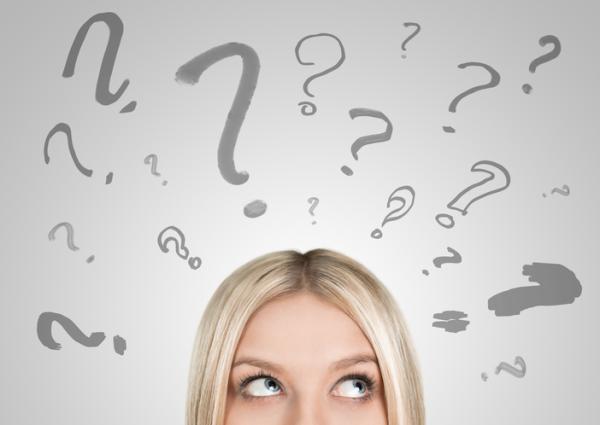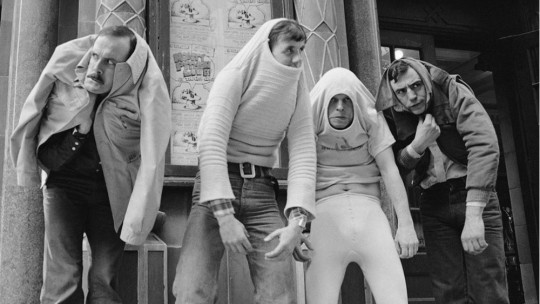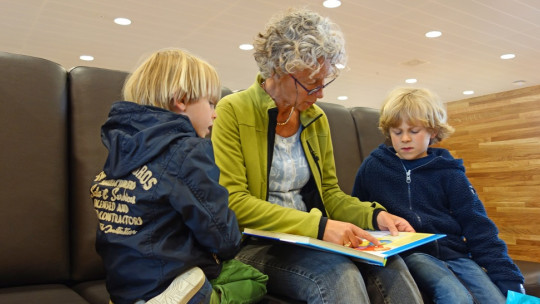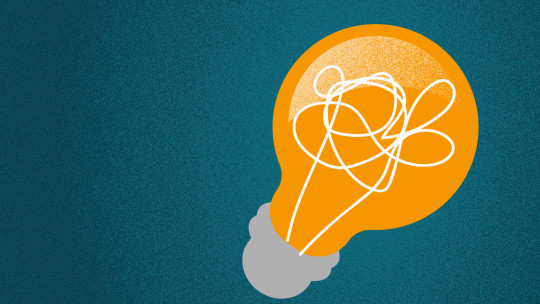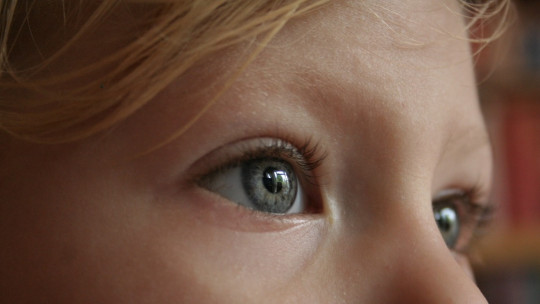For Dewey, thought is inscribed in a relationship between what we already know, our memory and what we perceive With this trilogy we give meaning to things, we create, we infer beyond what is given to us and that is the product “thought”. Inference takes place through the Suggestion of everything that is seen and remembered; That succession of ideas is thought. Dewey bases this entire process on two basic and innate resources: curiosity and suggestion or spontaneous ideas. Thought must drive some goal: an action, a result.
The need for reflective thinking
Dewey argues that the result requires a reflective thinking, that is to say, put order to that succession of ideas, It should not become a simple concatenation of ideas in relationships of consequences, but rather a certain order should promote thought directed toward some goal. Supporting the relationship between thought and rationality is precisely that conduction to reflective thinking through the careful comparison and balance of evidence and suggestions with a process of evaluation of what takes place to detect the most precise relationships that the relationships allow, Therefore, rationality cannot remain only in observation but rather the matter must be scrutinized, inspected, investigated and examined for accuracy.
An idea is a plan of action that has a constructive function, since ideas arise to solve problems, accepting the most successful of all ideas as true. Dewey’s rationality is related to thinking in the idea of the reflective method (logical competence) introducing empirical knowledge that leads to some goal through initiative, spontaneity, work and responsibility.
This construction leads to something to be done and a result, facing a mental difficulty in five phases:
- Appearance of suggestions
- Intellectualization of difficulty
- Hypothesis development
- Reasoning
- Hypothesis testing
Thus the rationality of reflective thinking makes action possible with a conscious objective and makes systematic work and invention possible as well as enriching things with meaning. In the text he mentions this relationship between thought and rationality as a method “It is likely to be a good thought when the subject has attitudes of care, rigor, etc.”
Although it departs from formal logic by referring to the real thinking that occurs in a context that said logic does not take into account. “Rationality is leading to an operational harmony between diverse desires. RATIONALITY involves a review of knowledge based on critical analysis, debate, and argumentation. For Dewey, the rationality of reflective thinking is the ability to learn and evolve over time.
Rationality for Dewey is the correspondence between ends and means Thought is not a conglomeration of sensory impressions, nor the fabrication of something called “consciousness,” much less a manifestation of an “absolute Spirit,” but rather a mediating and instrumental function that had evolved to serve the interests of survival and development. human well-being. This theory of knowledge highlights the “need to test thought through action if it is to become knowledge.” Thought is man’s instrument to learn.
Dewey ultimately tries to apply the rational in everyday life to the social through reflective research. Dewey instrumentalizes the descriptive and explanatory models, because he understands reflection to be a natural, but above all prescriptive, process.
The emotion
Emotion is a factor of our cognitive system< So problems such as the marital relationship cannot be reduced to the logical-mathematical study or a type of mental representations. In this definition: emotions must be considered as complex multifactorial phenomena that include, among others, the following aspects: a cognitive evaluation (would this correspond to a description of the situation?) situation – appreciation; a very diverse set of physiological changes – mainly related to the autonomic nervous system; Is this not comparable to the situation specification? a series of overt expressions or visible behaviors – facial and gestural expressions; a motivational component that is reflected in an intention or tendency to action. And wouldn't this be a description of the resources that can or cannot be used to achieve an objective? , and a subjective-experiential or feeling state –hedonic aspect of emotion.
Scientific thoughts
Scientific concepts have, by definitiona logical structure Many of them have a highly accentuated relational nature, that is, the core or meaning of the concept determines what its relevant attributes are.; Now, it is proven that most people have an erroneous or deviated conception of many scientific phenomena and that this conception partially conforms to the requirements of probabilistic theories, perhaps for this reason it can be argued that scientific concepts well defined do not represent the way people typically conceptualize the world.
And perhaps that is why I did not get satisfactory answers in the debates and people talked so generically about experience, thought in relation to feeling, or about being or not being. There I found my gap, I reread my notes on Cognition and Emotion in the two basic emotions of the individual (approach/flight) are not regulated by these theories where the everyday is quite disdained or defined as “poorly defined” because the role is being ignored of emotions (the most archaic cognitive process in human evolution and that has made the survival of the species possible) when searching, exploring and acting to solve problems, or perhaps it is what makes the most typical errors of the deductive thinking, formal logic, probabilistics or any other problem-solving strategy.
I keep thinking that It is the interpretation and the giving of meaning that makes hypotheses possible and a relationship between experience and prior knowledge which enables us to reach possible solutions or, as the module says, the most successful ones. Although these can, no matter how scientific their verifications have been, they can reach scientific conclusions such as that the earth was flat and then round.
Mastery of content
I think the mastery of content has been satisfactory from the understanding of the different ones. Both explanatory, prescribed and normative models, how we form the concepts and the problems of the different theories and how, depending on the classification, they are not capable of giving an explanation of how we form the concepts.
Deductive reasoning from natural logic where the innate ability of the mind to perform tasks is based on certain inferential rules – that is, competence – to mental models in which reasoning is elaborated by representations that can be derived from perception. and from language. The development and testing of hypotheses: analogy as a model of scientific thinking; implicit theories and representational redescription theories; the testing of hypotheses for the acquisition of concepts and how we continue to see that even scientists see their task as the confirmation rather than the falsification of hypotheses.
In the probability judgments and decision making their heuristics and biases (anchors, illusory correlations), the accessibility of information. How everyday and formal reasoning share equivalent structures; or how, through informal reasoning, we manage to solve ill-defined problems and make decisions in situations of uncertainty.
Finally decontextualized thinking, in context and creativity, differentiating in the normative nature of the first individualistic methodological approach of a closed and experimental nature to move to the present of the Psychology of current thought where methods of feedback, construction, cooperation and motivation, the cultural, the symbolic , wishful, narrative thinking form the new tools of this moment.
Reflection
The reflection has therefore been at all times, from how ideas arise and how they are mediated by our context, how they develop, what their process is. And above all, we have learned the hilarity that goes from concepts and their different combinations expressed through language, the direct influence they have on thinking and how actions are reached. The debates that we have been able to develop are the expression of rationality, how and from where our knowledge, our experiences are argued and how we have searched, worked to give it not only our perspective but also working to interweave them with the theories that we have handled in the semester.
This dynamics of our cognitive process ordering and sequencing by logical rules, deductions, strategies and how we make mistakes. All of this has enriched the thinking. Knowing that memory does not exactly reproduce our previous experiences or knowledge and that based on this knowledge we reproduce new realities, beliefs and hypotheses we have refuted or changed. Our ideas based on those reflections that others give us and that participate in the construction of our own.
I remain in my reflection that the duality of the innate and the learned, all human beings (in the context in which they are located) participate in an innate potentiality that they will develop based on the adaptive needs of their environment. And there begins learning to use the resources at your disposal – including those that you interact with others – to provide solutions to the problems that arise (both in everyday life and in science), especially in the creative thinking that requires skills and work capacity without which creative thinking would not be possible.
Talent and training are not exclusive but both of great need. Creative thinking leads to new experiences, some more developed than others due to cultural and genetic factors, among others, which act in the way in which the same experiences are related to previous knowledge and find new solutions to the difficulties that arise. and in conjunction with critical thinking, which complements the right side of the brain hemisphere. This thinking is influenced by the aspects of creativity, which can be learned, developed and depends on the level of importance that each person assigns to their expansion of thoughts James O. Whittaker.”
Creativity and thinking
You can learn to think creatively and incorporate innovation processes One of the most important points is to modify the role of the instructor, teacher, professor as the only one who knows the subject. Therefore, creative capacity depends, not on how creative people are, but on the conditions that the “Guides” create to foster the innovative spirit of their people. Giving self-confidence to people’s cognitive preferences, always transforming the way we think and behave, motivating and paying attention to the emotional with an interrelation through communication.
Relativizing the capacity and possibility of rules and norms. Not opposing the thoughts or reflective reasoning of the other but incorporating them, uniting them and transforming them, creativity includes reformulating ideas and doing it as an expectation not a risk, errors should serve us to restart the reflection process, create new hypotheses, share the imagination , intuition, logic, aesthetic sense. A rich medium is needed that stimulates creative thinking, which seems to be essential.
It is important to maintain spontaneity, recognize creative efforts and reinforce creative capacity.
Conclusions
Human thought is, in my opinion, a whole that, although it can be analyzed by parts in experimental work, It works in a set of processes that, apart, without relationship, they would not have the capacity to create I say this from the perception that I have in a large part of the subjects that propose analysis of the parts, and I have the academic sensation (a necessary but not sufficient condition) of being contemplating images of a human being who is lame or invalidated by some characteristics that are stigmatized as uncontrollable and therefore unscientific (but affection and fear are emotions that condition us even in the most experimental situations, and even affection carries, as we have seen, an element that enhances creativity, reflection and rationality. And escape It even produces personal constructions such as learned helplessness” and then this becomes an “obstacle thought” to our rationality. How useful it is to know!
Reflective thinking arises when we want to verify the solidity, the rational, of something we are dealing with, that is, to prove its veracity. Except in the modules of Probability Judgments and Elaboration of Hypotheses, where one accepts the rules that must be followed to arrive at these concepts, everything has been a continuous reflection, and seeing how they reflect on the reasons for the errors with the theories of Tversky and Kahneman on the heuristics of representativeness and accessibility, has been refreshing, repositions the concepts of formal logic as a filter and invites reflection from any perspective, yes, with orderly and arduous work.
This article is merely informative, at PsychologyFor we do not have the power to make a diagnosis or recommend a treatment. We invite you to go to a psychologist to treat your particular case.
If you want to read more articles similar to Thought according to Dewey we recommend that you enter our Cognitive Psychology category.

